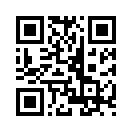I've been talking about this for the past 6 months..
As
Media Daily News reported last month, research giant Nielsen generated news by issuing a release confirming what readers of this newsletter already know: "Marketers Can't Afford to Ignore Baby Boomers."
While Nielsen's release consolidated some useful and recent information for the broader market, more important than its content was the identity of its source, a mainstream research firm and one of the two largest sources of consumer insights for Fortune 500 companies and the agencies that represent their brands.
Two quick highlights from Nielsen's release:
- Boomers dominate 1,023 out of 1,083 consumer packaged goods (CPG) categories
- While Boomers spend almost 39% of all CPG dollars, only 5% of advertising is directed at them.
Because Nielsen didn't reveal anything new for anyone who has looked into Boomer marketing even briefly, I was more interested in two facts besides those included in the release itself: first, its timing, and, second, the reaction to it.
The Timing: Why Boomers Now?
I think the shopping information may be what made Nielsen think this was the right time for such a release. Nielsen is paid to pay close attention to who is buying what, especially in the mass, drug and supermarket channels important to Nielsen's CPG clients. And I have a feeling that this is the first time Nielsen itself recognized how Boomers were dominating so many of the categories it researches. This information will make it harder for CPG marketers to take Boomers for granted, and could mark a turning point if brand managers start giving Boomers a bigger place in next year's marketing plans.
Another reason for the timing of the release may also relate to the facts it discloses. In the ongoing recession, the dominance of Boomers in so many categories is probably growing even more remarkable. As younger consumers continue scaling back their purchases across the board, the Boomer's relative importance in each of those categories (clothing, restaurants, cars, travel) becomes even more pronounced.
The Reaction: Stereotypes and Insights
I was also fascinated by the opinionated responses to the Nielsen release, here at MediaPost as well as at Adage.com. The feedback suggests that we still have a long way to go before marketers understand that being a Boomer is something different from being old. And it confirms my belief that Boomers are, in fact, fascinated with how marketers engage (or ignore) them, which itself offers marketers an interesting opportunity.
As for the misunderstanding, one TV ad sales manager asked about Nielsen, "How many cars do they think a 58-year-old is going to buy in the next 30 years? How many is a 25-year-old going to buy? It is all about reaching people who are in the formative years of setting their brand preferences. Older people do far less brand changes than younger, and the success of any company relies on building new customers. No marketer wants his company/product to end up like Oldsmobile."
These questions suggest that Nielsen's release, full of data familiar to many of us, is serving an important purpose. Responses like this confirm stereotypes that are both illogical (who is buying cars this year if not 58-year olds?) and disproven by research (Boomers are actively changing brands, and are willing to embrace new brands that embrace them). We will need a lot more Nielsen releases to changes the minds of people like this.
But all the research in the world couldn't say it better than another respondent did on Adage.com: "I am a married father of 3 kids (22, 20, 16), paying for 2 college tuitions, 4 cars and some highly professional female shoppers. We watch lots of TV, spend WAY more than the average family and are always on the go... I happen to be 55, so I guess I'm past the 'old' demo of 35-54 and not worth being targeted? Pay attention to my shopping/usage habits and you'll figure out how to best influence me -- but don't talk to me as if I'm anywhere near retirement age."
This 55-year old shared two of the most important insights for marketers who do decide to engage Boomers.
Boomer does not mean old or, as this articulate man says, "anywhere near retirement age." Marketers have still not really internalized the fact that there is now a generation or life stage that is no longer young but is a long way from old. That is what it means to be 50+ now, and messages geared at grandparents and retirees will fall flat.
Finally, this man's response reminds us that Boomers pay a lot of attention to the ways that marketers talk to them (or ignore them). Marketers should consider ageless messaging (like Apple's) to reach Boomers, but should also consider starting a conversation with Boomer consumers about the topic of marketing itself.
Everyone likes being recognized, especially if they've been feeling ignored. Marketers who want to follow Nielsen's advice should consider telling Boomers, who more than other generations seek recognition for their ability to change the world, "You've made us understand why we were wrong. We can't afford to ignore you. So let's start talking."














